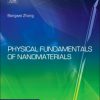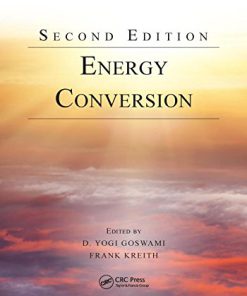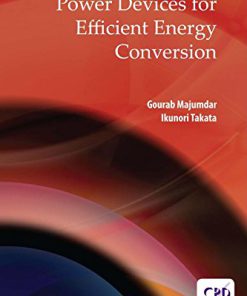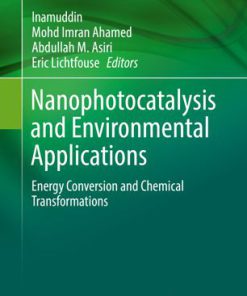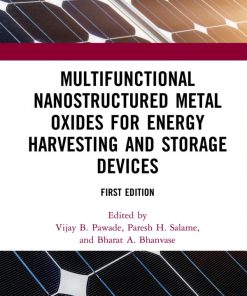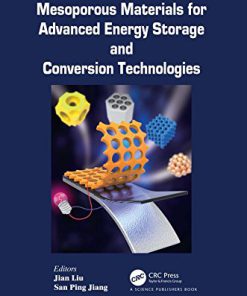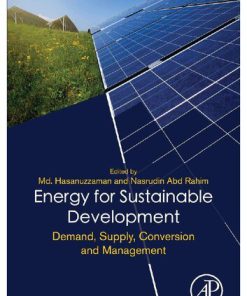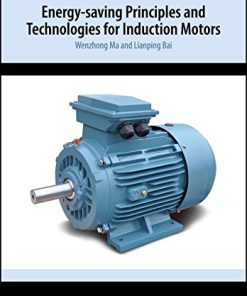Phosphors for Energy Saving and Conversion Technology 1st edition by Vijay Pawade,Sanjay Dhoble 9780429943225 0429943229
$50.00 Original price was: $50.00.$25.00Current price is: $25.00.
Phosphors for Energy Saving and Conversion Technology 1st edition by Vijay Pawade,Sanjay Dhoble – Ebook PDF Instant Download/Delivery:9780429943225,0429943229
Full download Phosphors for Energy Saving and Conversion Technology 1st edition after payment
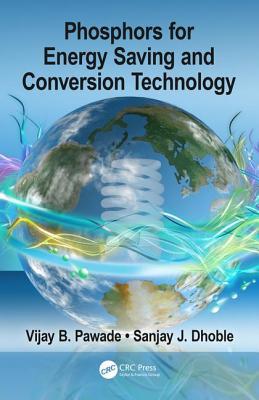
Product details:
ISBN 10:0429943229
ISBN 13:9780429943225
Author:Vijay Pawade,Sanjay Dhoble
This text deals with the advantages of rare earth activated phosphors for the development of solid state lighting technology and in enhancing the light conversion efficiency of Si solar cells. The book initiates with a short overview of the atomic and semiconductor theory followed by introduction to phosphor, its working mechanism, role of rare earth ions in the lighting and PV devices and host materials being used. Further, it introduces the applications of inorganic phosphor for the development of green energy and technology including advantages of UP/DC conversion phosphor layers in the enhancing the cell response of PV devices. Key Features: Focuses on discussion of phosphors for both solid state lighting and photovoltaics applications Provides introduction for practical applications including synthesis and characterization of phosphor materials Includes broad, in-depth introduction of semiconductors and related theory Enhances the basic understanding of optical properties for rare earth phosphors Covers up-conversion and down-conversion phosphor for energy harvesting applications
Phosphors for Energy Saving and Conversion Technology 1st Table of contents:
Part I Fundamentals of Atoms and Semiconductors
1 Short Review of Atomic and Semiconductor Theory
1.1 Atomic Theory
1.1.1 Short Overview of Atomic Model and Theory
1.1.1.1 Dalton’s Atomic Theory
1.1.1.2 Rutherford Model
1.1.1.3 Bohr Model
1.1.1.4 Sommerfeld’s Atomic Model
1.1.1.5 Free Electron Model
1.2 Basics of Semiconductors
1.2.1 Properties of Semiconductors
1.2.1.1 Electrical Properties
1.2.1.2 Optical Properties
1.2.2 Energy Bands in Semiconductors
1.2.3 Effect of Temperature on Materials
1.2.3.1 Insulators
1.2.3.2 Semiconductors
1.2.3.3 Conductors
1.2.3.4 Mobility
1.2.3.5 Carrier Concentration
1.2.3.6 Conductivity
1.2.4 Hole Current
1.2.5 Types of Semiconductor
1.2.5.1 Intrinsic Semiconductor
1.2.5.2 Extrinsic Semiconductor
1.2.6 Wide Band Gap Semiconductor
1.3 Germanium and Silicon Atoms
1.3.1 Germanium (Ge)
1.3.2 Silicon (Si)
1.3.2.1 Amorphous Silicon
1.3.2.2 Polycrystalline Silicon
1.3.2.3 Monocrystalline Silicon
1.4 Solar Energy and Solar Cells
1.4.1 Types of Solar Cell
1.4.2 Basics of Solar Cells
1.4.2.1 Construction and Operation
1.4.2.2 Loss Mechanisms
1.5 PV Solar Cells
1.5.1 I-V Characterization of PV-Solar Cells
1.5.1.1 Short-Circuit Current (ISC)
1.5.1.2 Open-Circuit Voltage (VOC)
1.5.1.3 Maximum Power (Pmax)
1.5.1.4 Fill Factor (FF)
1.5.1.5 Efficiency (η)
1.5.1.6 Temperature Measurement Considerations
1.5.1.7 I-V Curves for Modules
1.5.2 Advantages of Si Solar Cells
References
Part II Phosphors—An Overview
2 Introduction to Phosphors, Rare Earths, Properties and Applications
2.1 Phosphors
2.1.1 Luminescence
2.1.2 Mechanism of Luminescence
2.1.3 Classification of Luminescence
2.2 Rare Earth Ions
2.3 Transitions in Rare Earth Ions
2.3.1 Allowed Transitions
2.3.2 Forbidden Transitions
2.4 Selection Rules
2.4.1 Laporte Selection Rule
2.4.2 Spin Selection Rule
2.4.3 Selection Rule for the Total Quantum Number J
2.5 Nature of Bands
2.5.1 Sharp Bands
2.5.2 Broad Bands
2.5.3 Charge Transfer Bands
2.6 Photoluminescence Excitation (PLE) and Emission Characteristics of Rare Earth Ions
2.6.1 Eu3+
2.6.2 Sm3+
2.6.3 Pr3+
2.6.4 Tb3+
2.6.5 Nd3+
2.6.6 Er3+
2.6.7 Yb3+
2.6.8 Ho3+
2.6.9 Tm3+
2.7 Energy Transfer in Rare Earth Ions
2.7.1 Theory of Energy Transfer
2.7.2 Excitation by Energy Transfer
2.8 Photoluminescence
2.8.1 Rare Earth–Activated Phosphor
2.9 Classification of Materials
2.9.1 Metals
2.9.2 Ceramics
2.9.3 Polymers
2.9.4 Composites
2.9.5 Twenty-First-Century Materials
2.9.5.1 Smart Materials
2.9.5.2 Nanomaterials
2.10 Applications of Phosphors
2.10.1 Fluorescent Lamps
2.10.2 Light-Emitting Diodes (LEDs)
2.10.3 Flat Panel Displays (FPDs)
2.10.4 Cathode Ray Tubes (CRTs)
2.10.5 PV Technology
2.10.6 Upconversion Phosphor
2.10.7 Downconversion Phosphor
2.11 Types of Host Material
2.11.1 Tungstates
2.11.2 Vanadates
2.11.3 Oxides
2.11.4 Perovskites
2.11.5 Aluminates
2.11.6 Borates
2.11.7 Silicates
2.11.8 Aluminosilicates
2.11.9 Fluorides
2.11.10 Nitrides
2.12 Other Materials for LED Applications
2.12.1 Organic LEDs
2.12.2 Polymer LEDs
2.12.3 Quantum Dots for LEDs
References
3 Synthesis and Characterization of Phosphors
3.1 Synthesis of Phosphor Materials
3.1.1 Solid-State Method
3.1.2 Sol-Gel Method
3.1.3 Combustion Method
3.1.3.1 Advantages of Combustion Method
3.1.4 Precipitation Method
3.2 Characterization of Phosphors
3.2.1 X-Ray Diffraction (XRD)
3.2.2 Scanning Electron Microscopy (SEM)
3.2.2.1 Fundamental Principles of SEM
3.2.3 Transmission Electron Microscopy (TEM)
3.2.3.1 Construction and Operation
3.2.4 High-Resolution Transmission Electron Microscopy
3.2.5 Fluorescence Spectrophotometry
3.2.5.1 Mechanism of the Spectrofluorophotometer
3.2.6 Decay Time Measurement
3.2.6.1 Operating Principle
3.2.7 Diffuse Reflectance Method
3.2.7.1 Operation
3.2.7.2 DRS Study of Phosphors
3.2.7.3 Photon Energy
References
Part III Roles of Phosphors
4 Phosphors for Light-Emitting Diodes
4.1 Origins of Light-Emitting Diodes
4.1.1 Principle and Operation
4.1.2 Light Emitting Diode Colors
4.1.3 Types of Light-Emitting Diode
4.1.4 Operation of LEDs
4.1.5 I-V Characteristics of LEDs
4.2 Semiconductor Materials for LEDs
4.2.1 Indium Gallium Nitride
4.2.2 Aluminum Gallium Indium Phosphide
4.2.3 Aluminum Gallium Arsenide
4.2.4 Gallium Phosphide
4.3 Types of Phosphor
4.3.1 Blue Phosphor
4.3.2 Red Phosphors
4.3.3 Green Phosphors
4.3.4 Yellow Phosphors
4.4 Fabrication of White LEDs (WLEDs)
4.4.1 Method 1: RGB Method
4.4.2 Method 2: UV LED + Yellow Phosphor/RGB Phosphor
4.5 Special Features of LEDs
4.5.1 Challenges
4.5.1.1 Phosphor with Good CRI
4.5.1.2 Search for Novel Red Phosphors
4.5.1.3 Luminous Flux
4.5.1.4 Thermal Stability
4.5.1.5 Environmental and Humidity Effects
4.5.2 Bioluminescent Materials for LEDs: A New Approach
4.5.3 Advantages of LEDs
References
5 Phosphors for Photovoltaic Technology
5.1 Role of Rare Earth Phosphors in Photovoltaic Solar Cells
5.2 Types of Phosphor
5.2.1 Upconversion Phosphors
5.2.1.1 Some Reported Upconversion Phosphors
5.2.2 Downconversion Phosphor
5.2.2.1 Some Reported Work
5.3 Recent Developments in PV Technology
5.3.1 First Generation of Photovoltaics
5.3.2 Second Generation of Photovoltaics
5.3.3 Third Generation of Photovoltaics
References
Part IV Efficient and Eco-Friendly Technology
6 Photovoltaic Cell Response and Other Solar Cell Materials
6.1 Solar Photovoltaic Technology
6.1.1 Efficiency of Si-Solar Cells
6.1.2 Efficiency with Coating of Upconversion/Downconversion (UC/DC) Phosphor Layer
6.2 Some Reported Work
6.3 Types of Solar Cell
6.3.1 Organic Solar Cell
6.3.2 Perovskite Solar Cell
6.3.3 CdTe/CdS Solar Cell
6.4 List of Solar Cell Materials
6.5 Summary and Present Scenario of Crystalline Silicon Cells
References
7 Phosphors for Environmentally Friendly Technology
7.1 Introduction
7.1.1 Types of Renewable Energy Sources
7.1.1.1 Solar Energy
7.1.1.2 Wind Energy
7.1.1.3 Geothermal Energy
7.1.1.4 Hydroelectric Energy
7.1.1.5 Biomass Energy
7.2 Advantages of Phosphors
7.2.1 Need for Energy-Saving Technology
7.2.1.1 Solid-State Lighting (SSL) Technology
7.2.1.2 Environmental and Health Impacts of SSL
7.2.2 Energy Conversion Technology
7.2.2.1 Si Solar Cell Technology
7.2.2.2 Scope and Advantages of Crystalline Silicon (c-Si) Solar Cells
7.2.3 Photocatalysts for Wastewater Treatment
7.3 Clean Technology: An Economics of Sustainable Development
7.3.1 Advances in Urban Life
7.3.2 LEDs and Photovoltaics: A Better Alternative in the 21st Century
7.3.3 Main Goals of Development
People also search for Phosphors for Energy Saving and Conversion Technology 1st :
phosphorus in energy drinks
adding phosphates supplies or removes energy
phosphorus renewablea phosphorus cycle
a phosphorus anion is than a phosphorus atom
a low phosphorus diet
Tags:
Vijay Pawade,Sanjay Dhoble,Saving,Energy,Technology
You may also like…
Technique - Energy: Renewable Energy
Engineering - Bioengineering
Technique - Nanotechnology
Engineering
Mesoporous materials for advanced energy storage and conversion technologies 1st Edition Jiang
Engineering
Energy for Sustainable Development: Demand, Supply, Conversion and Management Nasrudin Abd Rahim
Engineering


